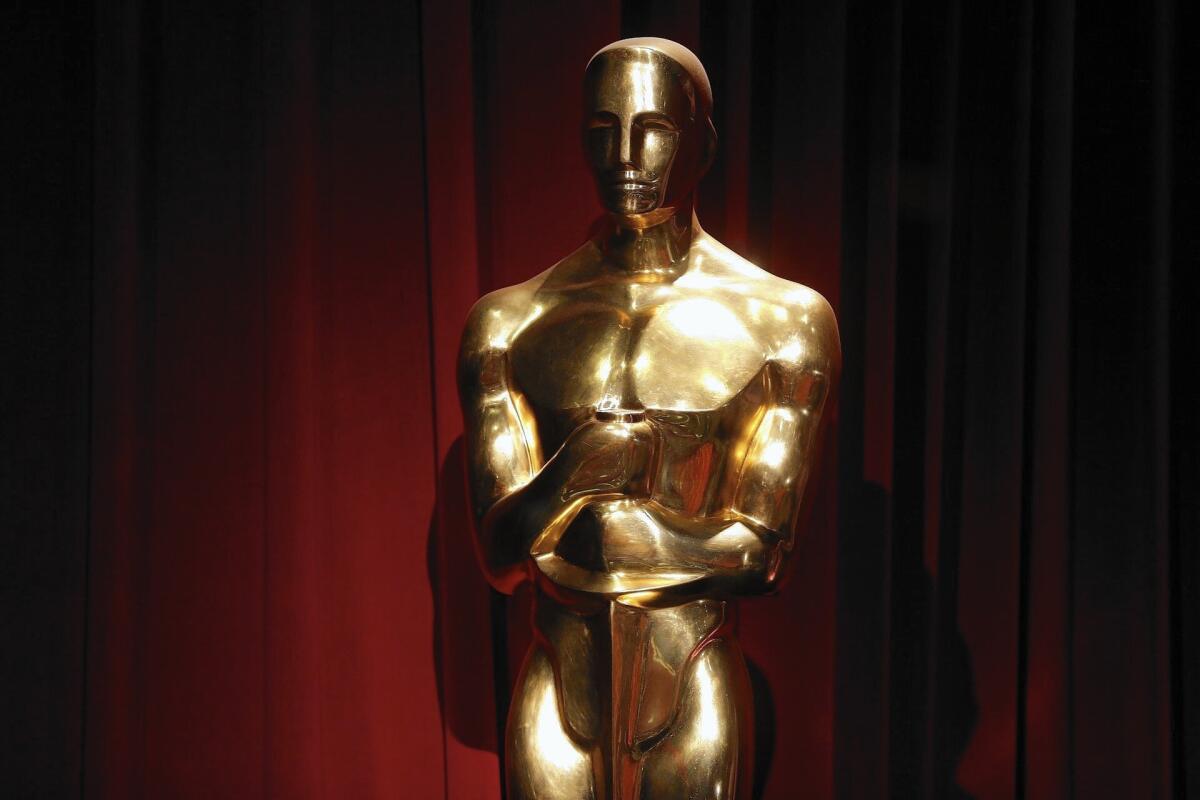The Oscars’ new inclusion rules sparked controversy. Here’s what academy leaders have to say

The motion picture academy is very familiar with controversy — in recent years, you could say it’s been a magnet for it. Now, in the wake of the group’s announcement of new inclusion standards that will soon be required of any potential best picture nominee, Hollywood’s preeminent organization has put itself squarely in the center of the ongoing national debate over issues of systemic racism and representation.
On Tuesday, in its latest step to boost diversity not only within its ranks but across the film industry, the academy detailed new criteria for best picture eligibility that will measure inclusion both onscreen — in the types of stories being told and the actors involved — as well as behind the scenes in the makeup of the crew and in the studios, production companies and distributors involved. Only films that meet two out of four specified categories of inclusion will be allowed to compete for the group’s top prize.
Though the initiative won’t go into effect until the 2024 Oscars, the reaction has been swift and intense. Some have cheered the new standards as a much-needed step toward a film industry that truly reflects its audience. Others have lambasted them as the latest example of political correctness run amok. Some say they go too far, while others say they don’t go far enough. And already many questions have arisen over exactly how they will be implemented and enforced.
On Wednesday morning, The Times spoke by phone with four key academy leaders behind the move: the organization’s Chief Executive Dawn Hudson and President David Rubin along with producer DeVon Franklin and Paramount Pictures’ chairman and CEO Jim Gianopulos, who serve as governors and led the task force on the new standards. The four shared their thoughts on the impetus behind the move, the blowback they have received from some quarters and how the standards may evolve going forward.
Did you anticipate a lot of strong reactions to this move, especially in the culture war context we find ourselves in?
Gianopulos: I think when you have an issue as complex as this, you’re bound to have multiple facets of perception. But the intentions were right, the objectives were correct and I think it achieved those. Is it perfect? No. Is it progress? Absolutely. So that’s got to be good enough for now.
Franklin: We anticipated this. We knew this was going to be a conversation. We knew people would have various reactions. But we felt that once you drill down on the actual standards themselves, you’ll see that there’s tremendous flexibility. It only enhances creativity and only enhances the definition of excellence and is not restrictive in any way at all.
Does this represent a change in how the academy sees its mission? Or is it just an extension of what the organization is already moving toward?
Hudson: I would say this is an extension of our mission absolutely, but the whole industry is behind this. This process, while it was long and comprehensive, it was really encouraging to see everyone come together, wanting to work together and wanting to do better and wanting to advance cinema this way.
When it came to defining and measuring inclusion in front of the camera, behind the camera and in the companies involved, how did you set about balancing all those things?
Franklin: The BFI [British Film Institute] certainly has been doing this work for years, and those standards were really a baseline that inspired our standards. We did a lot of workshopping, a lot of meetings across the industry, meetings with all the guilds. We really put a lot of effort into getting feedback and tweaking and making sure that there was a wide constituency around these standards. To Jim’s point earlier, it’s certainly not perfect but it’s progress.
To go back to your previous point, the academy was founded to advance film and this certainly is 1,000% in the spirit of that. We really wanted to make sure that we got a number of our industry constituents involved to get feedback and make sure this was as representative as possible.
Gianopulos: The intent was to create standards that were aspirational and objective so that the industry could both meet these aspirations, which everybody has been focused on both socially and in the creative community, and also provide a way to measure that objectively. And in that respect, I think people embraced that idea. As Dawn said, we got a lot of really positive feedback in the evolution of the standards to ensure that they were both progressive in their intentions and in their outcome but also manageable and capable of being met without impeding access to best picture eligibility.
Some argue that creating rules around things like casting and narrative could make it harder for some films to be eligible just because they happen to tell stories about white men, pointing to movies like “1917” and “The Irishman.” What do you say to those objections?
Franklin: Incorrect.
Gianopulos: That’s why there are four categories of standards.
Rubin: I can speak to that both as the chair of the board and as a casting director. The academy’s board is made up of 54 creative artists and craftspeople who understand the essential need for creative freedom. And requiring that two of the four standards be met gives a range of possibilities for participation in this initiative. Everyone will see filmmakers bring to the screen the stories they want to tell in the way they want to tell them.
Why roll the standards out over four years? Is it possible they will be tinkered with in the meantime?
Gianopulos: Well, especially with the industry stalled over this COVID crisis, we wanted to make sure that the filmmakers and the companies associated with the process had a chance to embrace the standards and plan for them going forward. That was the main reason for that.
As far as tinkering, there will be some clarifications of individual components of it from the academy in time. But any changes would be prospective in application, not on these timelines.
There are questions already about how these standards will be enforced. The system is based on production self-reporting but are you also building in a mechanism for the academy to confirm? Will there be things like spot checks of film sets?
Hudson: Part of the reason we’re rolling this out over the next few years is to enter into dialogue with the filmmakers, production companies, distributors about these standards and how to meet them. The BFI did some spot-checking looking at applications, but they have found that people are eager to meet the standards.
As we said, we really met with widespread support when meeting with all these various constituencies. People want to meet them. They’re not looking to find loopholes. They’re looking to work together to meet the standards and that’s the spirit in which we’re moving forward.
More to Read
Only good movies
Get the Indie Focus newsletter, Mark Olsen's weekly guide to the world of cinema.
You may occasionally receive promotional content from the Los Angeles Times.











